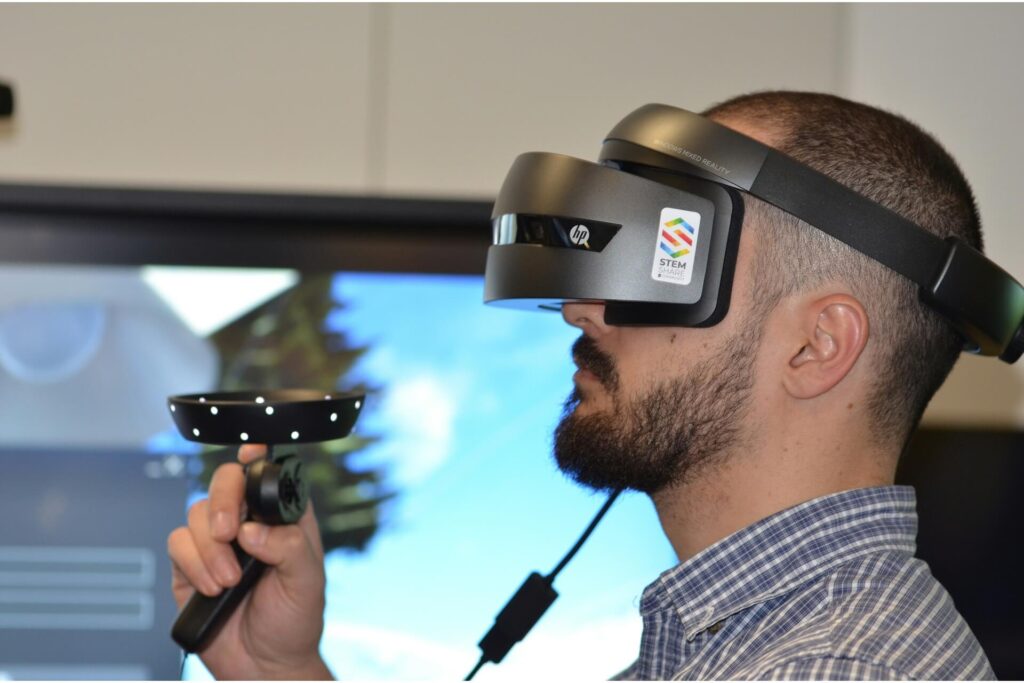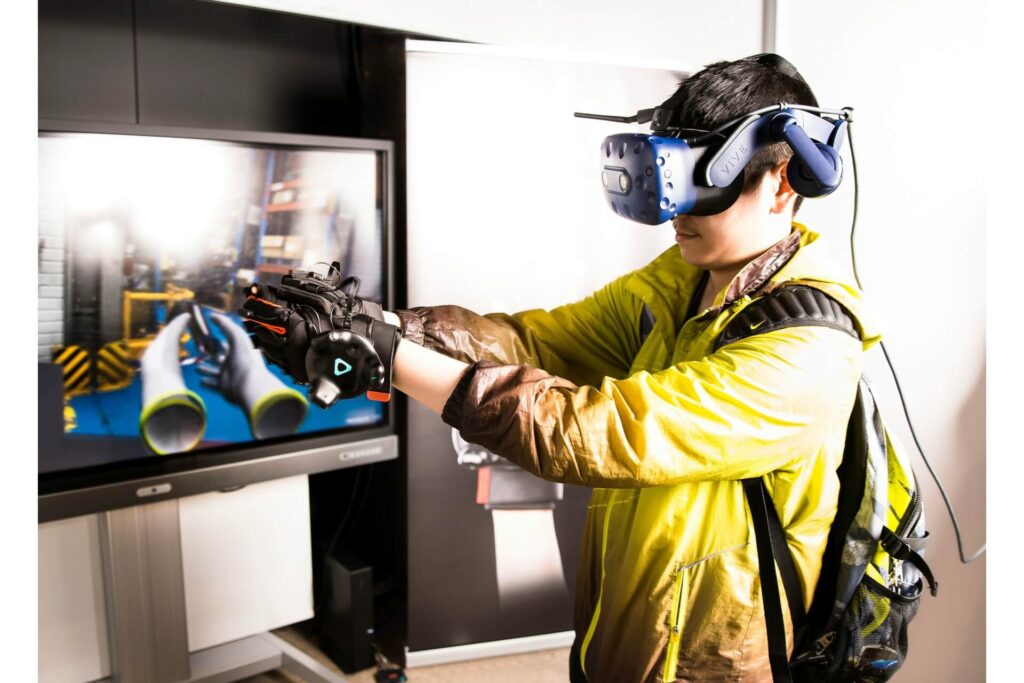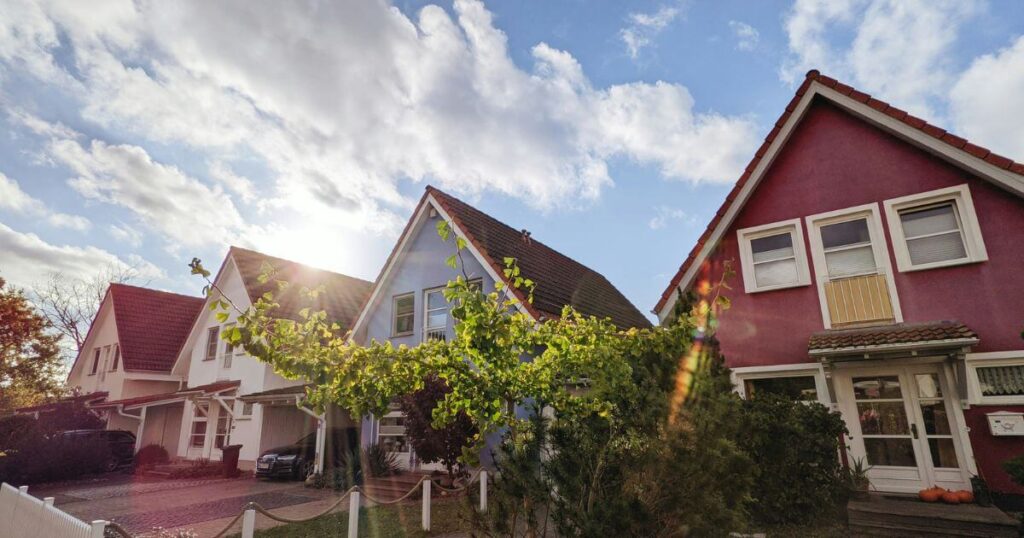
We are reader-supported. When you buy through links on our site, we may earn an affiliate commission.
When someone mentions the metaverse and traditional real estate in the same breath, they think worlds collide. They imagine it’s a competition between virtual and tangible assets. It’s too easy to fall into this mind trap.
Although hardcore advocates from both sides love disparaging the other camp, the metaverse and real estate as we know it have a bright future together.
Metaverse Has No Construction Constraints
“Buy land — they’re not making it anymore.” Mark Twain’s immortal words don’t apply to the metaverse. The planet’s size and topography confine traditional real estate. Cyberspace is another story.
The metaverse is an ever-expanding universe of interconnected virtual worlds. Construction never stops, so there’s always something new to buy, sell or trade.
The space isn’t subject to the laws of physics. The metaverse presents a world of architectural and engineering possibilities.
Digital Urban Sprawl Continues
Some publications have released metaverse obituaries following the epic fall in digital property prices in recent memory. Who can blame them?
The average 2021 floor prices of parcels in popular platforms like The Sandbox have plummeted by 95% three years later, wiping out many non-fungible token (NFT) holders.
The sell-off has left a bad taste in the mouths of newcomers to the space. However, this event is characteristic of cryptocurrency. Crypto’s cyclical nature would traumatize anyone unfamiliar with wild price fluctuations who can’t stomach such asset valuation roller coasters. The virtual real estate crash correlates with the end of the NFT mania.
The investors who wanted to make a fast buck and knew nothing about the metaverse lost shirt after interest in NFTs waned. They wrote off their losses, and the metaverse is still around.
The space will likely survive future turbulence. Pronouncing this tech disruptor dead is just what naysayers do to convince the public to forget about it and focus on traditional real estate.
The metaverse will likely go the way of Bitcoin. The first crypto has over 470 obituaries and counting. Its pulse hardly weakened after experiencing alternating bull and bear markets over the years. Bitcoin continues to reach new milestones, lending more credence to its utility as a currency and commodity.
Although the metaverse and NFTs don’t dominate the news lately, you can bet the space is growing rapidly.
The metaverse has an inherent user base. Metaverse developers primarily serve individual gamers who love interacting with digital assets. These users are no strangers to buying, selling and trading such commodities.
Gamers will continue to explore these immersive digital realms for amusement. Once more practical use cases for virtual real estate emerge and the technologies underpinning the metaverse mature, nongaming communities will follow suit.
NFTs Prove Real Estate Tokenization Is Feasible
Fractional ownership isn’t revolutionary in real estate. This concept allows multiple parties to co-own vacation properties, sharing expenses and maintenance duties.
NFTs take fractional ownership to the next level. Tokenization transforms houses and brick-and-mortar buildings into liquid assets.
Physical property developers and owners can register assets on a blockchain, create NFTs serving as digital versions of tangible pieces of real estate in the metaverse, and sell them to investors willing to own them fractionally in real life. This strategy reduces the minimum capital needed to invest directly in traditional real estate.
NFTs represent the holders’ rights and obligations. Smart contracts govern them, enabling these assets to change hands without human intervention. The algorithms in these digital contracts facilitate transactions upon meeting predefined conditions to trigger events.
The blockchain automatically records validated actions, rendering each permanent, immutable and tamperproof. Public blockchains are permissionless, nonrestrictive distributed ledgers. They promote transparency and ensure data availability.
Virtuality Renders Digital Twins More Immersive
The metaverse can positively impact construction and the rest of the real estate value chain.

Construction professionals use digital architectural and engineering models to iteratively polish structure design with increased collaboration. Together, these models make up evolving replicas of structures called digital twins. These virtual prototypes allow decision-makers to evaluate design feasibility, detect clashes, correct errors and visualize the finished product.
Bringing digital twins into the metaverse promotes immersiveness. Such simulation can reduce planning errors, implementation obstacles and postproduction adaptation difficulties. Optimizing these areas of development decreases the risk of rework and increases the chances of prompt project completion.
The metaverse allows digital twins to exist in a digital environment along with other interoperable assets. Once the digital infrastructure needed to make this capability possible matures, more construction professionals can push the boundaries of immersive digital twins postconstruction.

Digital twins can simplify asset maintenance even further when linked with internet-of-things sensors in building automated systems. These 3D virtual representations update themselves to reflect changes in their real-world counterparts. Immersive digital twins can help building maintenance professionals safely inspect the signs of wear and tear automated structures can’t fix.
Blockchain Streamlines Financing
Developers and property buyers can harness blockchain technology’s advantages to secure funding.
Creditors can reduce counterparty risk by implementing smart contracts, verifying the chain of title to identify liens more quickly, and benefiting from accurate, transparent record-keeping.
Blockchain promotes decentralization, reducing the number of third parties involved in the real estate value chain. Fewer intermediaries mean lower costs and speedier processes.
Blockchains don’t have a built-in mechanism to ensure data accuracy. Regulators can roll out and enforce standards to mandate data sources to report precise, truthful information.
Virtual Spaces Take Shape
Remote work has made virtual corporate spaces in demand to connect geographically fragmented teams.
Businesses can build offices in the metaverse from scratch and use templates offered by different platforms. Companies with employees working from home can establish a virtual headquarters or a digital version of a physical office.

The metaverse offers a practical path to collaboration and corporate culture building in the age of remote work. Immersive virtual workspaces allow remote colleagues to communicate casually through personal avatars.
As virtual reality headsets become more sophisticated, avatars can copy human body language more accurately. Interactions between co-workers in the metaverse will better resemble real-world exchanges over time.
The Metaverse and Traditional Real Estate Can Coexist
The metaverse is the next step in real estate’s evolution. Explore ways to leverage it to gain a first-mover advantage.







